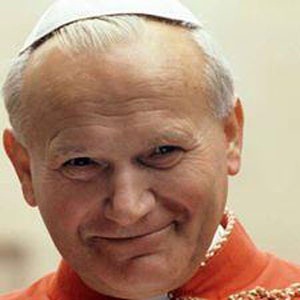
Starting with a visit to Bosto, the first American city where Pope John Paul II recited Mass in 1979, a relic containing a vial with the blood of the late Pope John Paul II, otherwise known as St. John Paul II, went on tour across the American East Coast.
The golden relic, which was given to the Knights of Columbus in 2011 and is normally housed at St. John Paul II’s shrine in Washington D.C., was available for worship at the Cathedral of the Holy Cross in Boston. The relic will also be on display for public worship in New York, Philadelphia and Baltimore.
“At the centre of the reliquary is a glass ampoule that contains the Holy Father’s blood, which remains in a liquid state. Surrounding the relic is a nimbus decorated with 12 red stones representing the Twelve Apostles and with rays projecting downward,” states St. John Paul II’s National Shrine website.
“The design evokes John Paul II’s homily during the Mass dedicating the Divine Mercy Shrine on August 17, 2002 … The late pope’s likeness is depicted just beneath the relic, and at the base of the reliquary in silver is a relief of his coat of arms.”
Read: Vial of Pope John Paul II's blood stolen
A number of relics containing St. John Paul II’s blood can be found all around the world. One housed at the Church of San Pietro della ienca in Italy was stolen in January, but was quickly recovered by police.
Read: Thieves threw away John Paul II relic - reports
Catholicism views relics as holy items, and they classify them in three different categories. A first-class relic is something taken from the body of a saint, such as St. John Paul II’s blood or St. Boniface’s bone fragment; a second-class relic is something used by a saint; and a third-class relic is something touched by a saint.
Read: John Paul II on the path to sainthood
Karol Józef Wojtyla, otherwise known as John Paul II since his election into the papacy in Oct. 2978, was born in Wadowice, Poland on May 18, 1920. He enrolled in Krakow’s Jagiellonian University in 1938 for drama, but Nazi forces closed down the university just a year later. Out of school, St. John Paul had to work in a quarry then in a Solvay chemical factory to make ends meet and to avoid being deported to Germany.
In 1942, John Paul II became aware of his call to priesthood and became ordained on Nov. 1, 2946. He became a bishop of Ombi in 1958, an archbishop of Krakow in 1964, a cardinal in 1967, and the first non-Italian pope in more than 400 years in 1978.
In 1981, an assassin shot at Pope John Paul II twice in St. Peter’s Square. Luckily he recovered from his injuries and even forgave the assailant.
During his reign, he influenced political change and advocated for human rights. Just before he died in Italy on April 2, 2005, at the age of 84, a huge crowd gathered, crying out “santo subito,” which means “sainthood now,” and more than 3 million people awaited his funeral on April 8.
Pope John Paul II became St. John Paul II on April 27, 2014, during his official sainthood ceremony.Read more:
Pope says gays must not be judged
Vatican dismisses criticisms of John Paul II
Pope says the world needs tenderness injection
Sources: Huffington Post, Saint John Paul II National Shrine, The Independent, BBC, Vatican and The Boston Globe




 Publications
Publications
 Partners
Partners













